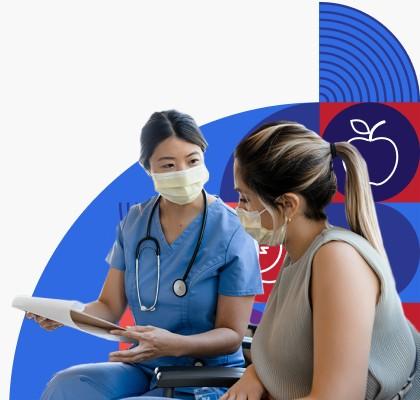Health Conditions
Get Screened for Breast Cancer

The Basics
Overview
Breast cancer is one of the most common kinds of cancer in women. About 1 in 8 women in the United States will get breast cancer during her lifetime.
Anyone who has breasts can get breast cancer.
The good news is that mammograms can help find breast cancer early — before it spreads to other parts of the body. Most people can survive breast cancer if it’s found and treated early.
How often should I get a mammogram?
If you’re age 40 to 74 years and you have breasts, get a mammogram every 2 years.
If you have a higher risk of getting breast cancer, your doctor may recommend that you start getting mammograms at a younger age or that you get them more often. The best way to find out what’s right for you is to talk to your doctor.
What is a mammogram?
A mammogram is an x-ray picture of the breast. Mammograms use a very low level of x-rays, which are a type of radiation. The risk of harm from this radiation is very low.
Mammograms can be used to screen (test) for breast cancer in people with no signs or symptoms. They can also help doctors figure out if cancer is causing a particular symptom — like a lump or another change in the breast.
When you get a mammogram, a technician will place your breast on a platform and a plastic plate will press it flat to get a clear picture. Usually, the technician will take 2 pictures of each breast — 1 from above and 1 from the side. This part of a mammogram can be uncomfortable, but it usually only lasts 10 to 20 seconds.
It takes about 20 minutes total to get a mammogram. Learn more about mammograms.
Make sure to ask when you’ll get your mammogram results. When you get the results, ask the doctor or nurse to explain what the results mean. Learn more about mammogram results.
Breast Cancer
What is breast cancer?
Breast cancer is cancer that forms in breast tissue. Like all cancers, breast cancer can spread to other parts of the body.
Talk with your doctor or nurse if you notice any of these changes:
- A lump or an area that feels very firm in the breast or armpit
- A change in the size, shape, or feel of the breast
- Fluid (called discharge) coming out of a nipple
- Skin on the breast that is itchy, red or purple, flaky, or dimpled
Learn more about breast cancer.
What if the doctor finds something in my breast?
Mammograms let your doctor or nurse look for lumps or other changes inside your breasts that you can’t feel from the outside. If they find a lump or another change in your breast tissue, you may need other tests to find out if it’s cancer.
For example, your doctor may take a small bit of tissue from the breast for testing. This procedure is called a biopsy.
Content last updated March 4, 2025


